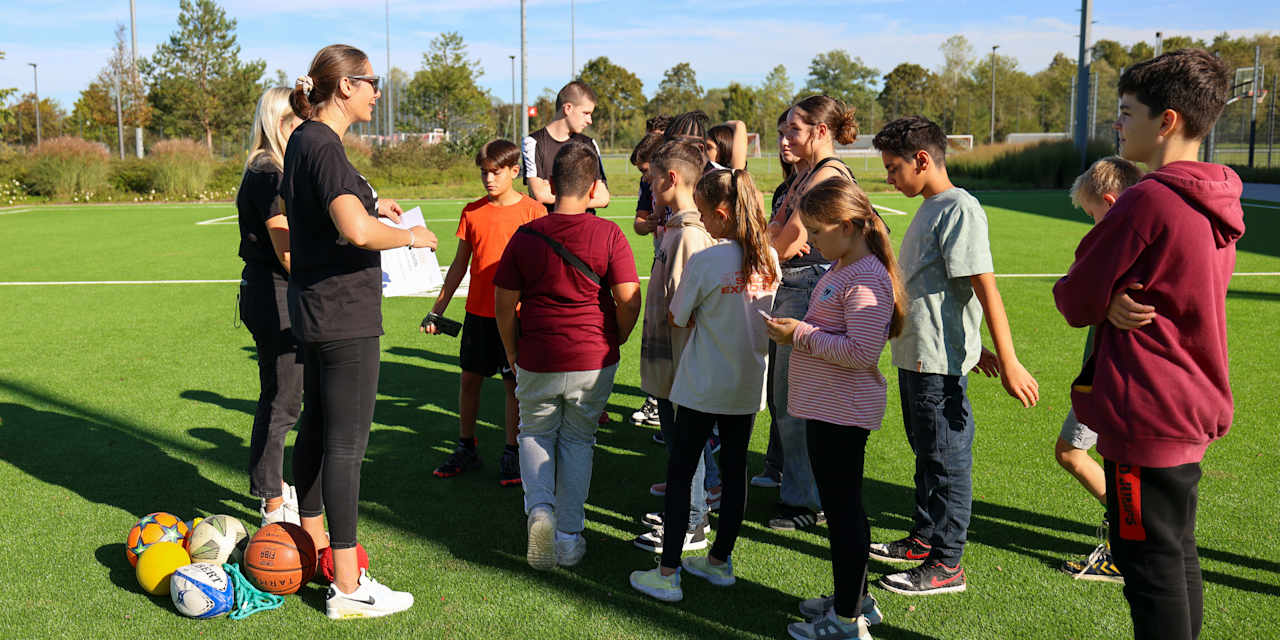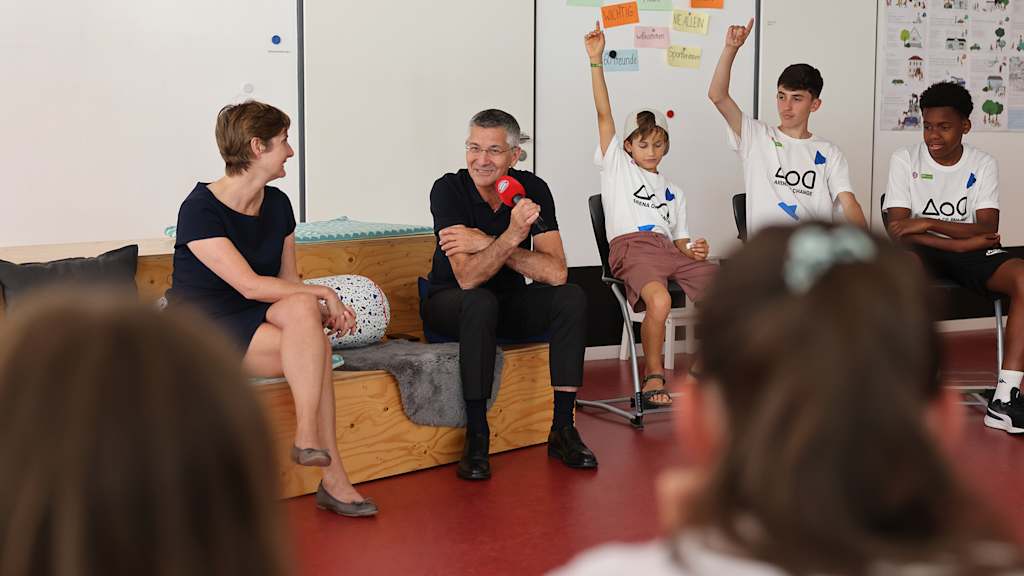
"What does 'healthy living' look like for you?" - Anna Kronen had hardly asked the question before the first ideas started bubbling up. "Shall we do something with running?" suggested Isabell (13). A few metres away, Jeani (10) was biting into a pear with delight. In front of her on the ground, her friend Lia (10) was sprawled out looking at her through a mobile phone - welcome to the Arena of Change photo workshop where the 15 kids of the Thursday group tried to answer given questions with photos. "It's really funny," said Maria (12), standing with Lisa (13) and Isabell. Together they looked at the phone screen, where you could see Isabell dashing around cones. "It's too far away, you can't really see it," said Isabell. So another try, and then another - "now it's good," Isabell said and grinned, "even if I look like an emu." The three laughed.

The Arena of Change at the FC Bayern Campus, a joint educational project of SOS Children's Villages Worldwide and FC Bayern, has been in existence for two and a half years. Around 60 children aged eight to 14 meet here once a week in one of four groups. The aim is for the kids to discover the world and themselves, explained Teresa Kudjer, who, together with her colleague Anna, provides the children with socio-educational support. "We deal with topics like sustainability, climate change, democracy or children's rights," Teresa explained, "every week it's about something different, the children also bring input, things that concern them." At the same time, they try to strengthen social skills. "We want the kids to be self-effective, to be able to overcome challenges on their own."
The Arena of Change at the Campus is located right next to the *1900 clubhouse, in a large room with a window front. On the walls hang self-made profiles of the kids, colourful drawings and a framed, signed jersey of Mathys Tel. The young Bayern striker visited at the end of last year, answered questions and played football with the kids. An unforgettable afternoon and one of the highlights since the start of the project. Directly below Tel's jersey, a projector now casts lettering onto the white wall. It says "Learn to take pictures!" The kids sit attentively in a semicircle in front of it. Anna and Teresa show a short presentation, only ten minutes of theory. It's about basic things: motifs, formats, shot sizes, exposure, perspectives.

A workshop awaits the kids at every meeting. After lunch together and free time, they devote themselves to a specific topic with a mixture of information and playful discovery. "The kids use smartphones and the internet a lot, so we want to take a closer look. Today it's about photography," Anna explained. In the coming weeks, a media licence and cyber safety are also on the agenda. "We want the kids to develop a certain sensitivity when it comes to photos and social networks."
After a fruit break, it's time for practice. Anna and Teresa have prepared seven tasks to solve. First of all, two dice are thrown. One of them gives photographic specifications, such as a long shot or bird's eye view, while the other determines a colour or an object, such as a ball, that must be visible in the photo. Here we go - first task: "What does fun look like to you?" Lisa, Marie and Isabell rolled the dice for ‘close’ and ‘rope’. "Maybe tug-of-war?" they ponder, "with a laughing face?" They try it out. Lisa and Isabell pulled on the rope laughing, Marie took photos. She thinks the result is "quite okay". Then they move on to the next task: "Show us what you can do really well!” For an hour they ponder, try out and laugh. In the end, the kids not only learn something about photography, they are also creative, make decisions in the group and work together as a team.

With one task, Teresa and Anna also touch on a completely different topic. "Can you understand the word 'inclusion'?", Anna asked. There is a general murmur and a shrug of the shoulders. "Inclusion means that everyone can take part," Teresa explained. The kids understood. They then had to represent the word letter by letter with their bodies. The I was easy, but the N required some fiddling. Is it best to do it in pairs? Or in threes? After ten minutes, the kids were lying next to each other on the artificial turf and you could actually read ‘Inclusion’.
The Arena of Change also stands for the fact that everyone is welcome. In fact, it is this diversity that makes the Arena so attractive. "Different kids come together, with different backgrounds and age structures - and it works wonderfully," says Teresa. What would a photo of the Arena of Change look like? Teresa and Anna don't have to think long. "Colourful, wild, loud. And you would see that we all belong together, even if we are all completely different," said Teresa. Anna nodded: "There would be room for everyone in the photo."


